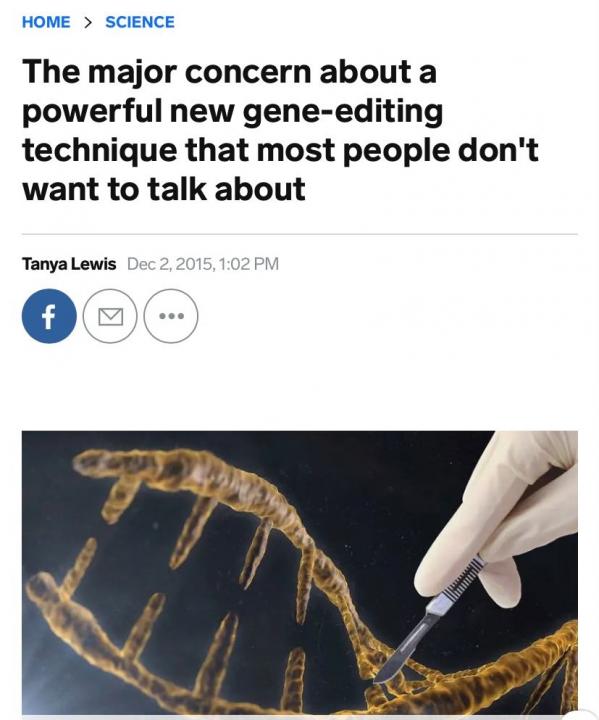HTN SPONSORED BUSINESSES
DONATE TO KEEP THE MOVEMENT GOING
Devetra BlueLotus Nefertiti's Album: Wall Photos
Eugenics by another name #CRISPR
The technique, known as CRISPR/Cas9, lets scientists cut-and-paste DNA inside cells to correct genetic defects or, potentially, add new capabilities.
businessinsider.com/gene-editing-h…
Also be mindful that the #CovidVaccine uses synthetic #mRNA w/gene altering adjuvants ~DevetraBlueLotus
But there's a dark side to manipulating our genetics that few want to discuss: Eugenics, the racist practice of trying to "improve" the human race by controlling genetics and reproduction.
A disturbingly widespread practice
While eugenics is most commonly associated with Nazi Germany, it was alive and well in the US and in other countries well before World War II, Daniel Kevles, a historian of science at New York University, said during a talk at the gene editing summit on Tuesday.
"Eugenics was not unique to the Nazis. It could — and did — happen everywhere," Kevles said.
He and others worry that gene editing tools like CRISPR could bring back something similar to eugenics by allowing us to create so-called "designer babies" with specific mental or physical characteristics.
Eugenics first gained popularity at the turn of the 20th century. The term was coined by the English polymath Francis Galton, Darwin's half-cousin and one of the field's pioneers. At its core, eugenics is about promoting the reproduction of so-called "superior" people and preventing reproduction among so-called "inferior" people.
Many prominent scientists were also supporters, Kevles said, including Charles Davenport, the director of the Carnegie Institution of Washington’s Department of Genetics in Cold Spring Harbor, New York. Davenport founded the Eugenics Record Office, which pursued eugenics research from 1910 to 1939; its board included the inventor Alexander Graham Bell, according to the ERO archives.
#eugenics
The technique, known as CRISPR/Cas9, lets scientists cut-and-paste DNA inside cells to correct genetic defects or, potentially, add new capabilities.
businessinsider.com/gene-editing-h…
Also be mindful that the #CovidVaccine uses synthetic #mRNA w/gene altering adjuvants ~DevetraBlueLotus
But there's a dark side to manipulating our genetics that few want to discuss: Eugenics, the racist practice of trying to "improve" the human race by controlling genetics and reproduction.
A disturbingly widespread practice
While eugenics is most commonly associated with Nazi Germany, it was alive and well in the US and in other countries well before World War II, Daniel Kevles, a historian of science at New York University, said during a talk at the gene editing summit on Tuesday.
"Eugenics was not unique to the Nazis. It could — and did — happen everywhere," Kevles said.
He and others worry that gene editing tools like CRISPR could bring back something similar to eugenics by allowing us to create so-called "designer babies" with specific mental or physical characteristics.
Eugenics first gained popularity at the turn of the 20th century. The term was coined by the English polymath Francis Galton, Darwin's half-cousin and one of the field's pioneers. At its core, eugenics is about promoting the reproduction of so-called "superior" people and preventing reproduction among so-called "inferior" people.
Many prominent scientists were also supporters, Kevles said, including Charles Davenport, the director of the Carnegie Institution of Washington’s Department of Genetics in Cold Spring Harbor, New York. Davenport founded the Eugenics Record Office, which pursued eugenics research from 1910 to 1939; its board included the inventor Alexander Graham Bell, according to the ERO archives.
#eugenics


